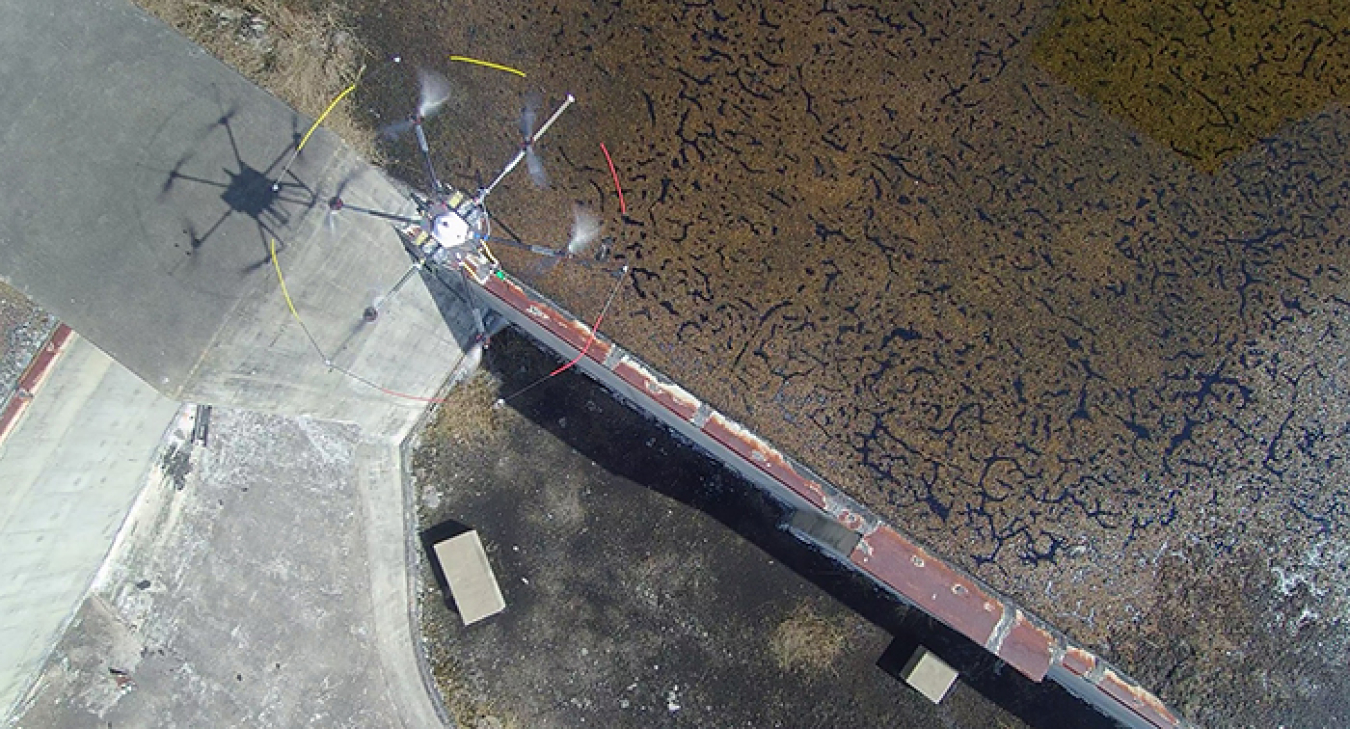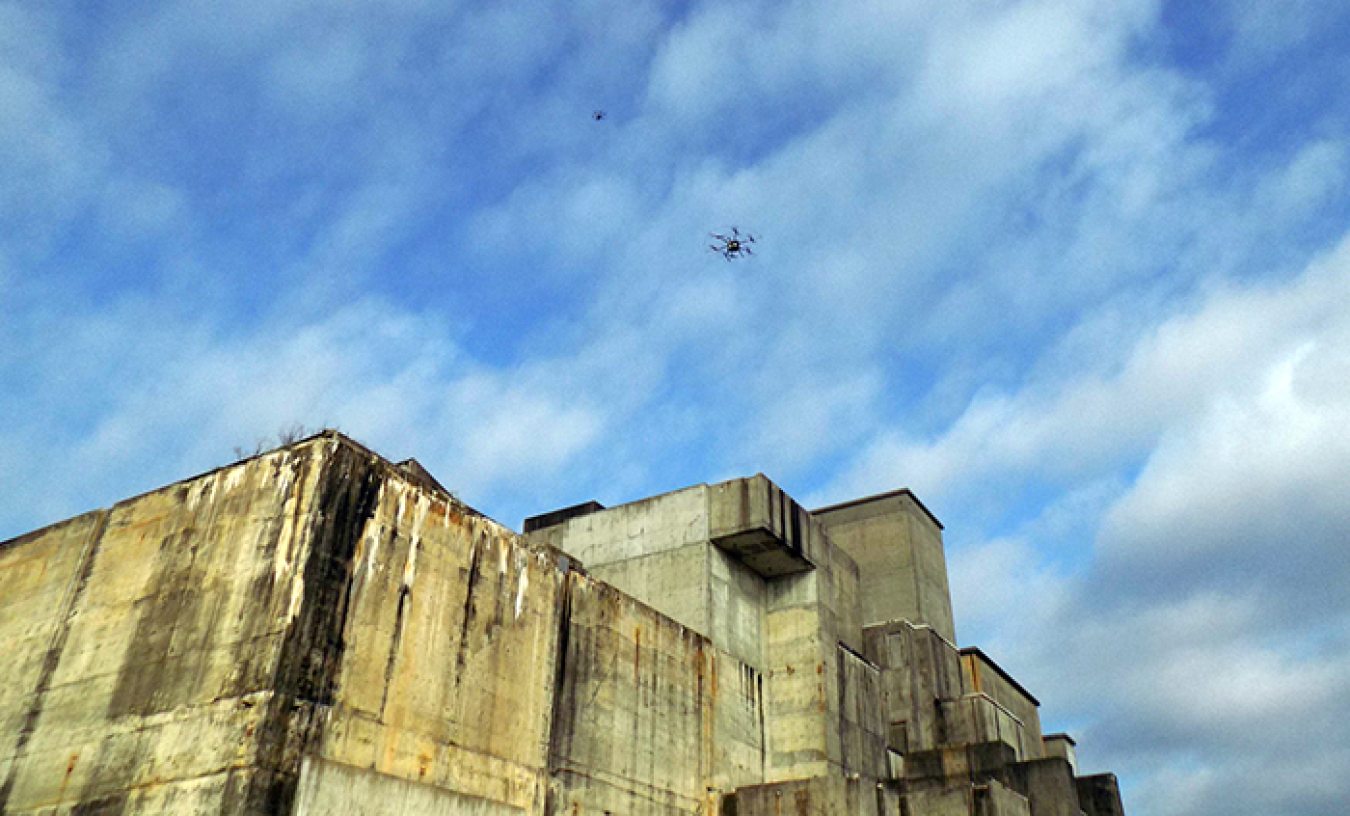DOE Honors SRS for Drones Performing Rooftop Building Maintenance
Office of Environmental Management
October 8, 2019
AIKEN, S.C. – DOE recently recognized a Savannah River Site (SRS) team for its innovative approach to sustainability involving the use of aerial drones to control the growth of vegetation atop two closed reactor buildings, saving more than $170,000 a year.
“Using aerial drones to inspect the roofs of closed reactors high above the ground using high-resolution video cameras provides for significant improvements in our efficiency and effectiveness,” said DOE-Savannah River Operations Office Physical Scientist Philip Prater. “The drones also allow post-closure surveillance and maintenance activities to be performed remotely at these facilities, keeping our workers safe.”
DOE’s Sustainability Performance Office sponsors the Sustainability Awards, including the Innovative Approach to Sustainability Award presented to the SRS team from the DOE-Savannah River Operations Office, SRS management and operations contractor Savannah River Nuclear Solutions (SRNS), and EM’s Savannah River National Laboratory (SRNL).
“We’ve recognized for some time now the tremendous potential drone technology offers us in multiple areas within the missions SRNS is contractually tasked to achieve at SRS,” said Chris Bergren, SRNS director of environmental compliance and area completion projects.
SRS had previously relied on helicopters to control the vegetation growth on the rooftops of the P and R reactors buildings, which crews finished decommissioning in 2011.
“With the discovery of vegetative growth on the reactor roofs, that may allow root intrusion,” Bergren said. “We began to use a helicopter crew and an SRNS photographer to determine the amount of growth and then spray the plants as necessary. This approach was highly effective, but also very expensive.”
To improve that approach, SRNS and SRNL deployed a small drone to capture video and photos of the rooftops, providing a more thorough inspection than the assessments by the helicopter crew, at half the cost. The team then partnered with Virginia Tech to build a drone to spray herbicide on the rooftops.

The entombed reactor buildings at SRS were constructed to last for thousands of years with proper maintenance. Implementing a long-term, safe, sustainable, and efficient maintenance plan ensures the integrity of the structures over time.
The Sustainability Awards program recognizes the contributions of individuals and teams at DOE facilities across the country who have demonstrated inventive ideas with applicability across the DOE complex.
Members of the award winning SRS team are Peter Avioli, Ronald Bartholomew, David Bender, Chris Bergren, Joe Burch, Todd Coleman, Herb Craven, Jeffrey Crenshaw, Marcia Delmore, James DeMass, Alan Doane, Jim Fudge, Mike Griffith, Avery Hammett, Todd Hatfield, Kelsey Holcomb, Angelia Holmes, Gary Hoover, Tommy Johnson, Charles Koss, Troy Lorier, Jimmy McMillian, Amy Meyers, Ted Millings, Earl Morrison, Carl Noe, Tony Polk, Philip Prater, Kirby Scott, Tommy Sessions, Mark Spurlock, and Robbie Wood.

